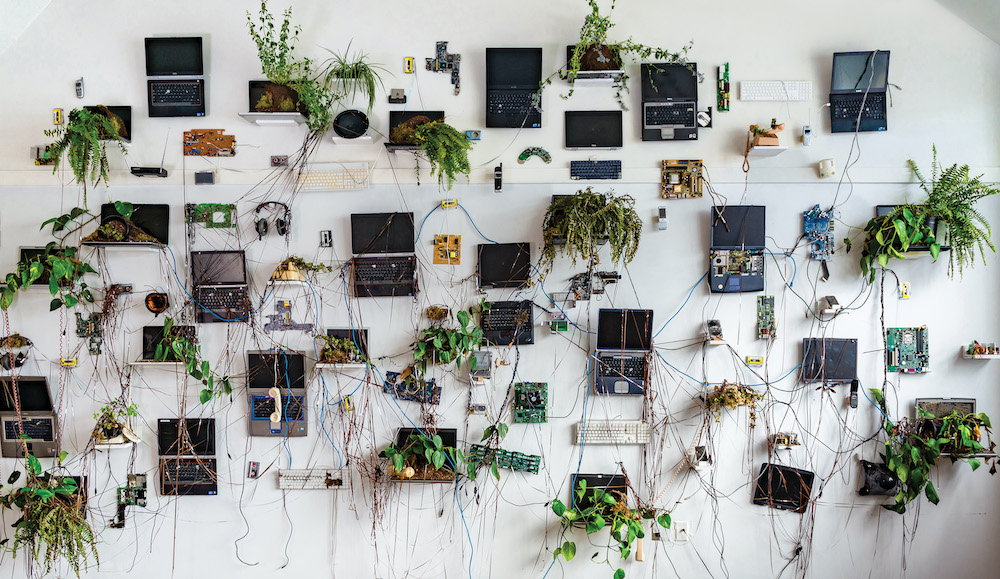Binghamton University Art Museum announces its winter exhibitions featuring The World After Us: Imaging techno-aesthetic futures (on view Jan. 27–March 10, 2022)

What will digital media be and do, after us?
What will my laptop, phone or tablet look like in a million years?
How will our devices weather or grow over time?
What else might our techno-waste be, and how might we sense and feel this?
Where might electronics lead our environmental and economic politics?
Can we plan and act toward new and different futures?
Utilizing sculpture, installation, prints and photographs, Nathaniel Stern’s exhibition asks the viewer to rethink their conversations, thoughts and actions around technology production, use and waste. He materially speculates what our devices (phones, tablets, batteries, LCDs, etc.) might become over the next decades, thousands or millions of years. Stern uses art and aesthetics to resituate, speculate, wonder and propose. He asks viewers to be curious, imagine, test and play. He combines plant life with electronic waste, scientific experimentation with artistic exploration. According to Stern, the exhibition and project is simultaneously a “seriously playful and playfully serious intervention into the emotional relationships that we have with our digital devices.”
The exhibition provides opportunities for the Binghamton University Art Museum to function as a laboratory setting, inviting transdisciplinary explorations outside of the frameworks of the University’s Transdisciplinary Areas of Excellence. It also allows us to connect with Cornell University, as Johannes Lehmann, Liberty Hyde Bailey Professor in the School of Integrative Plant Science, is a collaborator on Stern’s project. The exhibition considers issues of climate change, alternative fuels, compostable plastics, carbon sequestering through Stern’s artistic praxis and collaborations. It is an exhibition and programming that would provide ways for us to think collaboratively and investigate the ways that art production and aesthetics can work alongside the sciences and engineering in these investigations, not just in a supplementary role.
Generous support for this exhibition is provided by the IBM Corporation located in Endicott, N.Y.
Also opening on Jan. 27 are three exhibitions: Big Prints: Techniques and Technologies; The Materiality of Medieval Manuscripts; and Topographies: Changing Conceptions of the American Landscape; and three exhibitions curated by students: Black Imagination Patterns; Miseries and Misfortunes: How Jacques Callot Critiqued War; and Red & Black to White & Blue: The Transformation of the Classical Vase.
For details on upcoming programming see the Art Museum’s “Events” webpage + social media.
